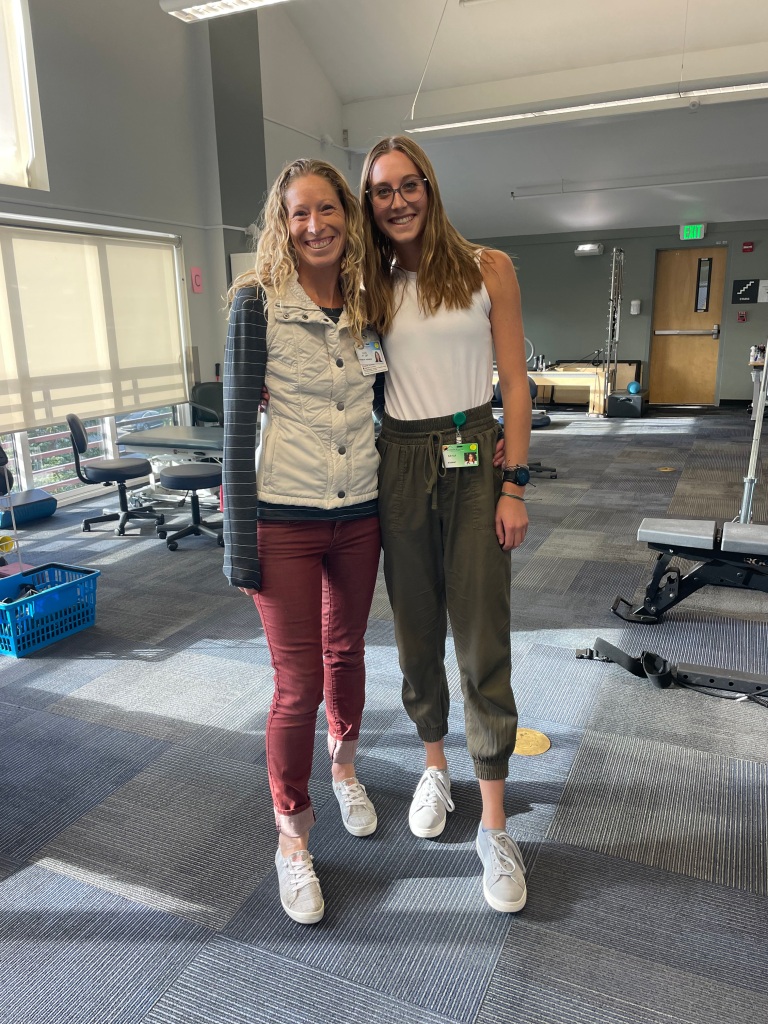Written by: Kayla Neumann, Class of ‘25 DPT Student

I was placed in Mammoth Lakes, CA at the Mammoth Hospital Physical Therapy clinic. It is a rural outpatient clinic serving the small mountain town (pop ~7,000) and the neighboring towns in the Eastern Sierra. The community is very active and had just had a record-breaking snow year, so I saw many ski and snowboard injuries that even just happened in August! Along with winter sports, the town is full of trail runners, mountain bikers, climbers, hikers… you name it. Almost every patient had some outdoor hobby they were eager to get back to. The physical therapists share similar lifestyles to their patients, which automatically created a great relationship between them and who they were treating. They were invested in their patients holistically.
A majority of the patients are in for MSK/ortho injuries and surgeries, but I also got to work in pelvic health, neuro, wound care, and inpatient. The physical therapists at the clinic embody the idea of “being specialist at being a generalist”. I was able to work with so many different diagnoses, which was an amazing opportunity for my first rotation. I also had two CI’s, one who had advanced training in manual therapy for the spine and extremities, and one who worked with orthopedics, pelvic health, and wound care. I was exposed to many patients we hadn’t covered in our curriculum prior to CE I, including back, shoulder, pelvic health, neck, and myelopathy. This was intimidating at first, but it helped me become more comfortable not knowing the answer to everything. My CI’s taught me so much about the things I didn’t know before clinic, but also took the time to continue to develop my knowledge of the things I had already learned and felt confident treating. The clinic culture opened my eyes to how important it is to have a great team in your back pocket. 2-3 PTs would share the same patient due to the high demand at the clinic, so communication was crucial and every PT valued each other’s clinical opinion and knowledge.
I saw many of the challenges that a rural setting like Mammoth encounters on a daily basis. We had to be creative with HEPs based on home set-up. Many patients live in campers or vans in the area and don’t have access to a gym. Having a detailed layout of where they could do their exercises was a factor in our clinical decision-making regarding what to prioritize in the clinic and what to send them home with. Some patients lived 1-2 hours away due to the lack of PT in the Eastern Sierra. This made it more difficult to see progress and create consistent change. Wound care was especially challenging due to the lack of specialized clinics. Mammoth had only a couple PTs taking on wound care patients and they did not have enough resources to treat the more complex wounds. This was frustrating for both the PTs and the patients. There is also a large Hispanic population living in Mammoth Lakes, but the clinic had access to live interpreters via tablets for patients that could not speak English. I was surprised to see the miscommunication Spanish-speaking patients experienced with other members of the interprofessional team (MDs and surgeons) despite having these resources at the hospital.
Overall, I had an amazing experience at Mammoth Hospital and I highly recommend this site to students who want to work in a more active community, but see diagnoses beyond sports medicine injuries. It is a beautiful, special place and I definitely encourage future students to get out and explore the area to understand why their patients call this place home.